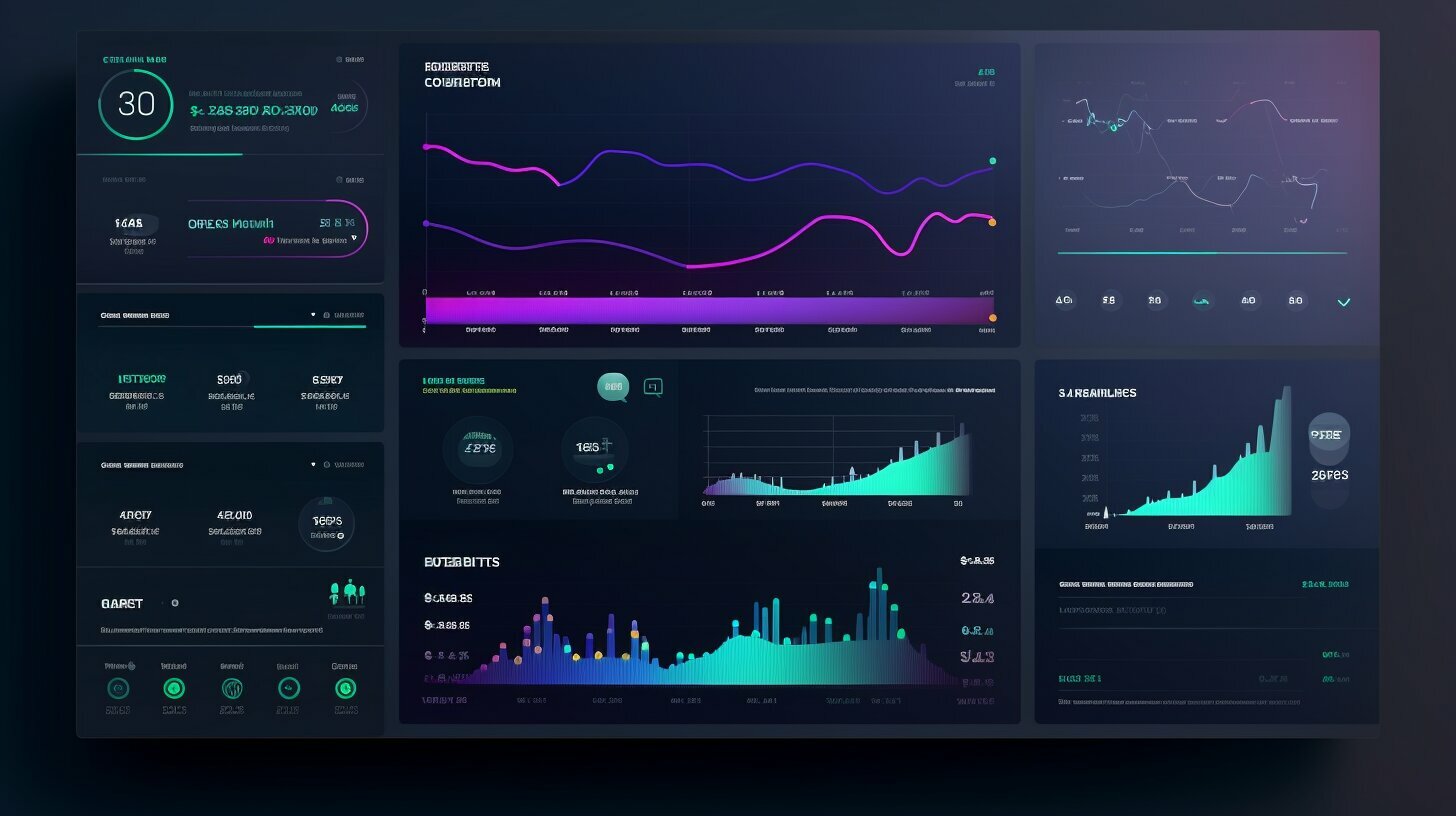Web applications have come a long way since the early days of the internet. With the rise of real-time communication, users expect faster, more responsive experiences from their web applications. Node.js web sockets provide a solution to this challenge, offering a way for web applications to communicate with clients in real-time.
In this article, we’ll explore the fundamentals of using Node.js web sockets for real-time communication. We’ll cover the benefits of using web sockets, explain how they work, and provide practical examples and code snippets to help you get started.
Key Takeaways
- Node.js web sockets offer a way for web applications to communicate with clients in real-time.
- Web sockets enhance user experience and improve performance in web applications.
- Socket.io is a popular Node.js library for implementing web sockets.
Understanding Node.js Web Sockets
Web sockets are a powerful mechanism for enabling real-time communication between a client and server in web applications. In the context of Node.js, web sockets provide a means of bidirectional communication that alleviates the need for traditional HTTP polling or long-polling techniques, which can have a negative impact on performance and scalability.
At a high level, web sockets establish a persistent connection between a client and server, allowing both parties to send and receive data in real-time. This connection is initiated through a handshake process, which involves a series of HTTP requests and responses between the client and server. Once the connection is established, data can be sent and received using a simple message-based protocol.
Node.js provides built-in support for web sockets through the ‘ws’ module, which allows developers to create a WebSocket server and client using standard APIs. However, the ‘socket.io’ library has emerged as the de facto standard for implementing web sockets in Node.js, due to its ease of use and robust feature set.
Understanding ‘socket.io’
‘socket.io’ is a JavaScript library that provides a simple and reliable way to implement real-time communication using web sockets in Node.js. It offers a range of features, including:
- Automatic reconnection
- Room-based messaging
- Custom event handling
- Binary data support
‘socket.io’ works by abstracting away the underlying WebSocket protocol and providing a higher-level abstraction that is easy to work with. It leverages the EventEmitter API in Node.js to provide seamless event handling, and its API is designed to be consistent across both the client and server sides of the application.
Building Real-Time Web Applications with Node.js
Real-time communication is critical for interactive web applications that require immediate exchange of data, and Node.js provides an efficient solution for building such applications. Node.js enables building scalable and performant real-time web applications using web sockets, which allows bi-directional communication between a server and clients.
Real-time web applications provide a seamless user experience with instant updates, eliminating the need to refresh pages. Node.js web sockets make it possible to achieve this level of interactivity while conserving server resources.
Building real-time web applications involves two critical components: a server and a client. The server is responsible for processing data received from clients and broadcasting changes to connected clients. The client, on the other hand, is responsible for establishing a connection with the server and receiving updates.
Node.js web sockets can be implemented using the popular socket.io library. Socket.io provides a straightforward API for building real-time web applications. It supports features like automatic reconnection, binary data transmission, and broadcasting to multiple sockets, making it easy to scale real-time applications.
Real-time web applications built with Node.js web sockets are suitable for various use cases, including chat applications, gaming, collaborative editing, and real-time analytics. Node.js web sockets provide a reliable and efficient data transfer mechanism, supporting real-time communication over the web.
Implementing WebSocket Communication in Node.js
Real-time communication using web sockets in Node.js is a powerful tool for creating fast, responsive web applications. In this section, we will explore how to implement web socket communication in a Node.js application.
Step 1: Installing socket.io
The first step is to install the socket.io library. You can use the following command to install it:
npm install socket.io
This will download and install the latest version of socket.io and its dependencies.
Step 2: Setting up the Server
Next, we need to create a server that will listen to incoming socket connections. Here’s an example code snippet:
const app = require('express')();
const http = require('http').createServer(app);
const io = require('socket.io')(http);
http.listen(3000, () => {
console.log('listening on *:3000');
});In this example, we have used the ‘express’ library to create an HTTP server and the ‘socket.io’ library to handle incoming socket connections. We have also specified that the server should listen on port 3000.
Step 3: Handling Socket Connections
Once the server is set up, we need to handle incoming socket connections. Here’s an example code snippet:
io.on('connection', (socket) => {
console.log('a user connected');
});In this example, we are logging a message to the console when a new socket connection is established.
Step 4: Sending and Receiving Messages
With the server set up and socket connections handled, we can now send and receive messages between the server and connected clients. Here’s an example code snippet:
io.on('connection', (socket) => {
socket.on('chat message', (msg) => {
console.log('message: ' + msg);
});
});In this example, we have created a ‘chat message’ event that is triggered when a client sends a message to the server. The message is logged to the console.
Step 5: Broadcasting Messages
Finally, we can broadcast messages to all connected clients. Here’s an example code snippet:
io.on('connection', (socket) => {
socket.on('chat message', (msg) => {
io.emit('chat message', msg);
});
});In this example, when a client sends a ‘chat message’, the server broadcasts the message to all connected clients using the ‘io.emit’ method.
By following these steps, you can easily implement web socket communication in a Node.js application. Be sure to follow best practices and ensure your code is secure and scalable.
Socket Programming with Node.js
Socket programming refers to the use of sockets to enable communication between different processes or systems. In the context of Node.js, socket programming can be used to create real-time communication channels between a server and clients.
Node.js provides a built-in ‘net’ module that allows for low-level socket programming. However, for web applications and real-time communication, the ‘socket.io’ library is commonly used. Socket.io offers a high-level API that simplifies the process of creating socket-based applications.
To begin socket programming with Node.js and socket.io, the first step is to install the library. This can be done using either the npm or yarn package managers:
$ npm install socket.io
$ yarn add socket.io
Once installed, the next step is to create a socket server. This can be done by instantiating a new instance of the ‘socket.io’ library and attaching it to a server instance:
const app = require('http').createServer();
const io = require('socket.io')(app);
app.listen(3000, () => {
console.log('Socket server listening on port 3000');
});
The above code creates an HTTP server instance and instantiates a new socket.io instance, passing the server as an argument. The server is then started and set to listen on port 3000.
To create a socket client, the ‘socket.io-client’ library can be used:
$ npm install socket.io-client
$ yarn add socket.io-client
Once installed, a client can be created by instantiating a new ‘socket.io-client’ instance:
const socket = require('socket.io-client')('http://localhost:3000');
socket.on('connect', () => {
console.log('Socket client connected');
});
socket.on('message', (data) => {
console.log('Received message from server:', data);
});
The above code instantiates a new client instance and connects it to the server using the ‘http://localhost:3000’ address. When the client connects, a ‘connect’ event is emitted. Additionally, the client listens for ‘message’ events from the server and logs any data received.
Socket programming with Node.js can be used for a variety of real-time communication applications, including chat rooms, multiplayer games, and collaborative editing tools.
Enhancing Performance and Scalability with Node.js Web Sockets
Node.js web sockets provide a powerful solution for building real-time web applications that require high performance and scalability. In this section, we will explore techniques for optimizing and scaling real-time communication using Node.js web sockets.
Load Balancing
One of the most effective ways to improve the performance and scalability of Node.js web socket applications is through load balancing. Load balancing involves distributing incoming traffic across multiple servers to prevent any one server from becoming overloaded and slowing down the application.
There are several load balancing strategies, including round-robin, IP-hash, and least connections. Round-robin distributes incoming traffic across servers sequentially, while IP-hash uses the client’s IP address to determine which server to send the request to. Least connections distributes traffic to the server with the fewest active connections.
Caching
Caching is another technique that can greatly improve the performance of Node.js web socket applications. Caching involves storing frequently accessed data in memory, allowing the server to quickly retrieve the data instead of querying the database or performing other resource-intensive operations.
There are several caching solutions available for Node.js web socket applications, including Redis and Memcached. These solutions provide fast, efficient caching and can greatly reduce the load on the server.
Compression
Compression can also be used to improve the performance of Node.js web socket applications. Compression involves reducing the size of data sent between the server and client, reducing the amount of data that needs to be transmitted and improving overall performance.
Compression can be implemented using middleware such as zlib or gzip. These middleware solutions can compress data on the server before sending it to the client, and decompress data on the client side.
By using load balancing, caching, and compression, developers can greatly enhance the performance and scalability of Node.js web socket applications, providing users with a smooth, responsive experience.
Conclusion
In conclusion, Node.js web sockets have revolutionized real-time communication in web applications. By enabling bidirectional, event-driven communication between client and server, web sockets enhance the user experience and improve performance.
This article explored the fundamentals of Node.js web sockets, including how they work, their benefits, and the socket.io library. We also discussed building real-time web applications using Node.js, implementing web socket communication, and socket programming.
Using Node.js web sockets can significantly enhance the performance and scalability of real-time web applications. With techniques for optimizing and scaling real-time communication using Node.js web sockets, developers can create faster and more reliable applications that can handle large volumes of traffic.







